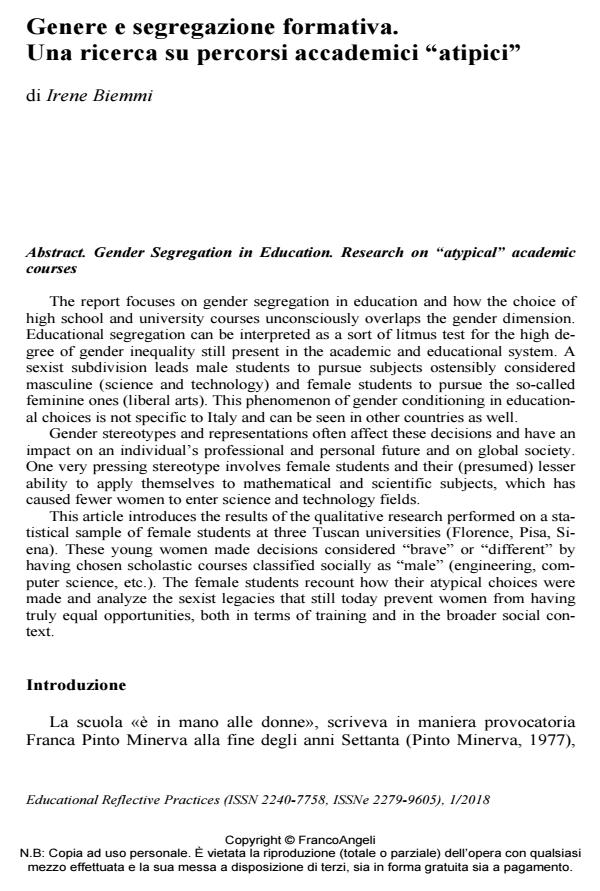Gender Segregation in Education. Research on "atypical" academic courses
Journal title EDUCATIONAL REFLECTIVE PRACTICES
Author/s Irene Biemmi
Publishing Year 2018 Issue 2018/1
Language Italian Pages 19 P. 198-216 File size 222 KB
DOI 10.3280/ERP2018-001012
DOI is like a bar code for intellectual property: to have more infomation
click here
Below, you can see the article first page
If you want to buy this article in PDF format, you can do it, following the instructions to buy download credits

FrancoAngeli is member of Publishers International Linking Association, Inc (PILA), a not-for-profit association which run the CrossRef service enabling links to and from online scholarly content.
The report focuses on gender segregation in education and how the choice of high school and university courses unconsciously overlaps the gender dimension. Educational segregation can be interpreted as a sort of litmus test for the high de-gree of gender inequality still present in the academic and educational system. A sexist subdivision leads male students to pursue subjects ostensibly considered masculine (science and technology) and female students to pursue the so-called feminine ones (liberal arts). This phenomenon of gender conditioning in education-al choices is not specific to Italy and can be seen in other countries as well. Gender stereotypes and representations often affect these decisions and have an impact on an individual’s professional and personal future and on global society. One very pressing stereotype involves female students and their (presumed) lesser ability to apply themselves to mathematical and scientific subjects, which has caused fewer women to enter science and technology fields. This article introduces the results of the qualitative research performed on a statistical sample of female students at three Tuscan universities (Florence, Pisa, Siena). These young women made decisions considered "brave" or "different" by having chosen scholastic courses classified socially as "male" (engineering, com-puter science, etc.). The female students recount how their atypical choices were made and analyze the sexist legacies that still today prevent women from having truly equal opportunities, both in terms of training and in the broader social con-text.
Irene Biemmi, Genere e segregazione formativa. Una ricerca su percorsi accademici "atipici" in "EDUCATIONAL REFLECTIVE PRACTICES" 1/2018, pp 198-216, DOI: 10.3280/ERP2018-001012